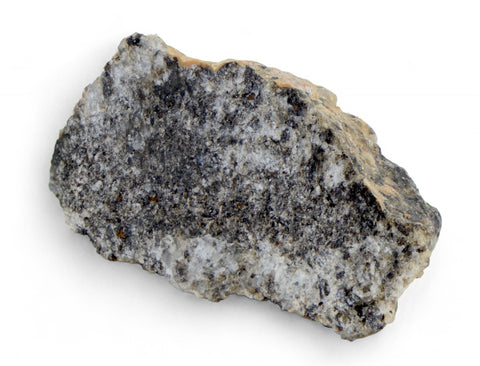4.4g Ksar Ghilane 023 end slice Achondrite Ungrouped Meteorite
le

Dustin studying Ksar Ghilane 023 at the CU Boulder microprobe lab. Dustin's Research focuses on better understanding the immiscible spheroidal exotic sulfides in this fascinating achondrite. We have identified; oldhamite, alabandite, daubréelite, and caswellsilverite. Our analysis show this meteorite has no appreciable iron (Fs0-0.1) in the silicates. The exotic aubrite-like sulfide minerals do sometimes contain Fe with an XS chemical formula where S is sulfur and X can be Ca, Mg, Mn, Fe, or Cr which can take the form of the exotic cubic sulfides; oldhamite, alabandite, daubréelite, and caswellsilverite, and others that are only found in the highly reduced enstatite chondrites, aubrites and rare reduced ungrouped achondrites.
| Ksar Ghilane 023 | |||||||||||||||||||||||||||||||||||
|---|---|---|---|---|---|---|---|---|---|---|---|---|---|---|---|---|---|---|---|---|---|---|---|---|---|---|---|---|---|---|---|---|---|---|---|
| Basic information |
Name: Ksar Ghilane 023 This is an OFFICIAL meteorite name. Abbreviation: KG 023 Observed fall: No Year found: 2023 Country: Tunisia Mass:  16 kg 16 kg |
||||||||||||||||||||||||||||||||||
| Classification history: |
This is 1 of 172 approved meteorites classified as Achondrite-ung. Search for other: Achondrites, Ungrouped achondrites |
||||||||||||||||||||||||||||||||||
| Comments: | Approved 18 Oct 2025 | ||||||||||||||||||||||||||||||||||
Writeup |
Writeup from MB 114:
Ksar Ghilane 023 (KG 023) 32°33'31.4"N, 9°30'27.2"E Tatawin, Tunisia Purchased: 2023 Mar Classification: Ungrouped achondrite History: Several stones were acquired by Ahmed Saleck E. in March of 2023 near Libya while he was traveling in the region. Physical characteristics: Several stones with exterior covered in a friable black fusion crust with saw cut revealing a gray and white interior. Petrography: (D. Dickens, LMAC) Two polished thin sections were analyzed using EPMA and BSE imaging. This meteorite is a highly reduced coarse grained Mg-rich clinopyroxenite composed predominantly of endmember augite (perhaps better described as subcalcic diopside) ~92.5 vol.% with minor enstatite ~7.5% vol.% and accessory aubrite-like sulfides. Enstatite occurs as small anhedral and subhedral grains poikilitically enclosed within clinopyroxene. Enstatite is also found as fine exsolution lamellae within clinopyroxene grains. Sulfides are troilite, alabandite, daubréelite, caswellsilverite, and oldhamite occurring as monophase and polyphase immiscible spheroids ranging from approximately 5 to 50 µm within clinopyroxene grains. A single small grain of low-Ni kamacite was found and confirmed with EDS. No olivine or plagioclase were detected. Geochemistry: (D. Dickens, LMAC and Aaron S. Bell, Ucolo) Augite Fs0.0-0.1Wo37.4-40.9 (N=39), enstatite Fs0.0-0.1Wo0.9-3.6 (N=20). Alabandite Mn=45.9±1.8 wt%, S=36.3±0.4 wt%, Fe=15.8±1.8 wt% (N=19). Daubréelite S=43.2±0.5 wt%, Cr=34.2±0.6 wt%, Fe=18.2±0.9 wt% (N=39). Caswellsilverite S=43.9±0.2 wt%, Cr=35.5±0.1 wt%, Na=14.8±0.01 wt% (N=2). Oldhamite Ca=54.3 wt%, S=41.5 wt% (N=1). Oxygen isotopes (R. Greenwood, OU): analyses of acid-washed subsamples by laser fluorination gave, respectively, δ17O 2.906, 2.931; δ18O 5.521, 5.547; Δ17O 0.009, 0.020 per mil (all data linearized, TFL slope = 0.5247). Classification: Achondrite (ungrouped, Mg-rich clinopyroxenite) This meteorite is related to KG 022 and NWA 15915 based on nearly identical geochemistry and minerology as well as updated oxygen isotope analysis of KG 023, KG 022, and NWA 15915 analyzed in the same run and using a consistent 0.5247 slope value for all samples. Results show a tight grouping for all three meteorites. *Previous oxygen isotope analysis for KG 023, KG 022 and NWA 15915 were performed under different conditions at different labs using different slope values of 0.5247, 0.528 and 0.526 respectively. Specimens: Type specimen of 20 g at TCU, remainder with Ahmed Saleck E. |
||||||||||||||||||||||||||||||||||
| Data from: MB114 Table 0 Line 0: |
|
||||||||||||||||||||||||||||||||||
We Also Recommend












